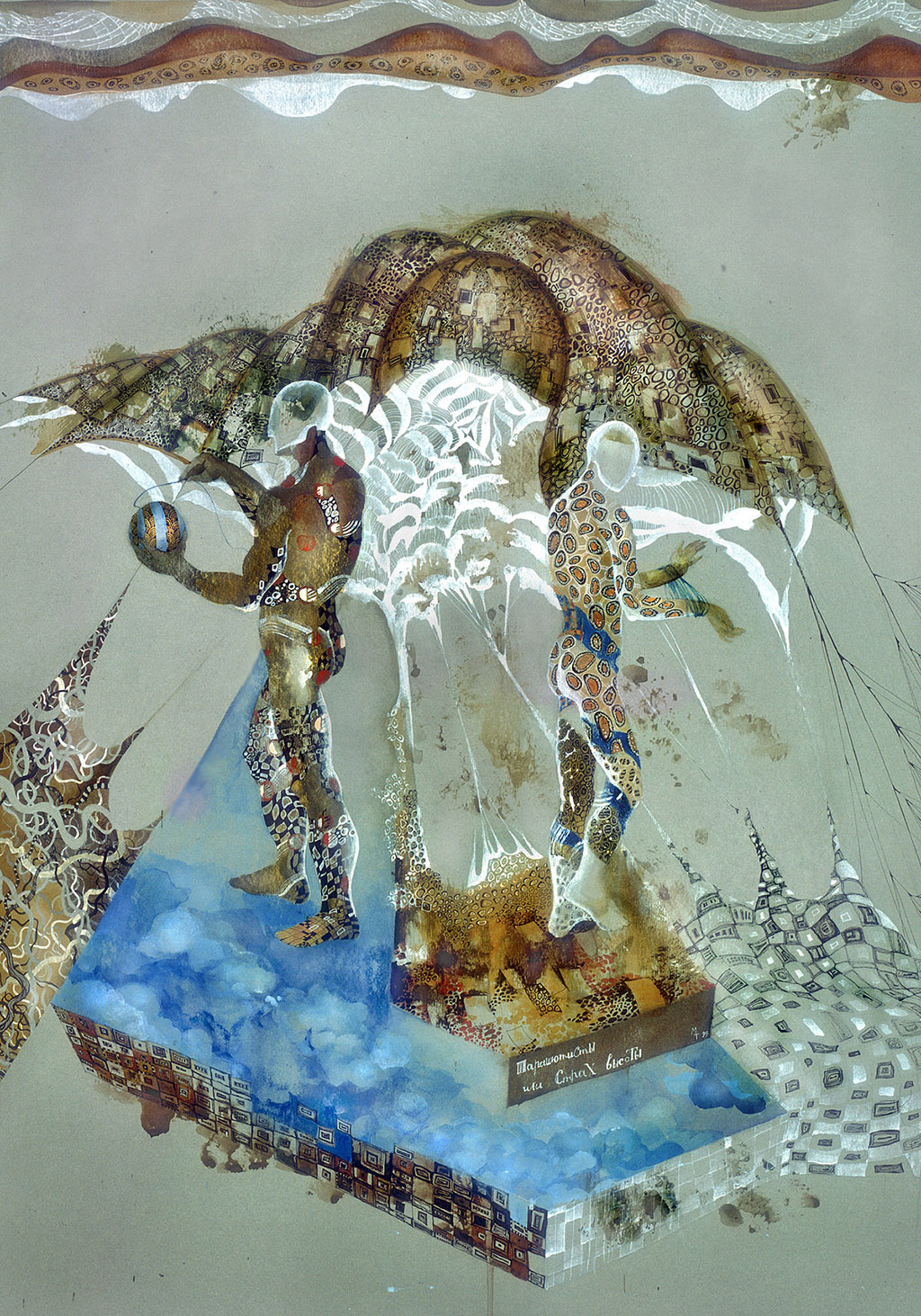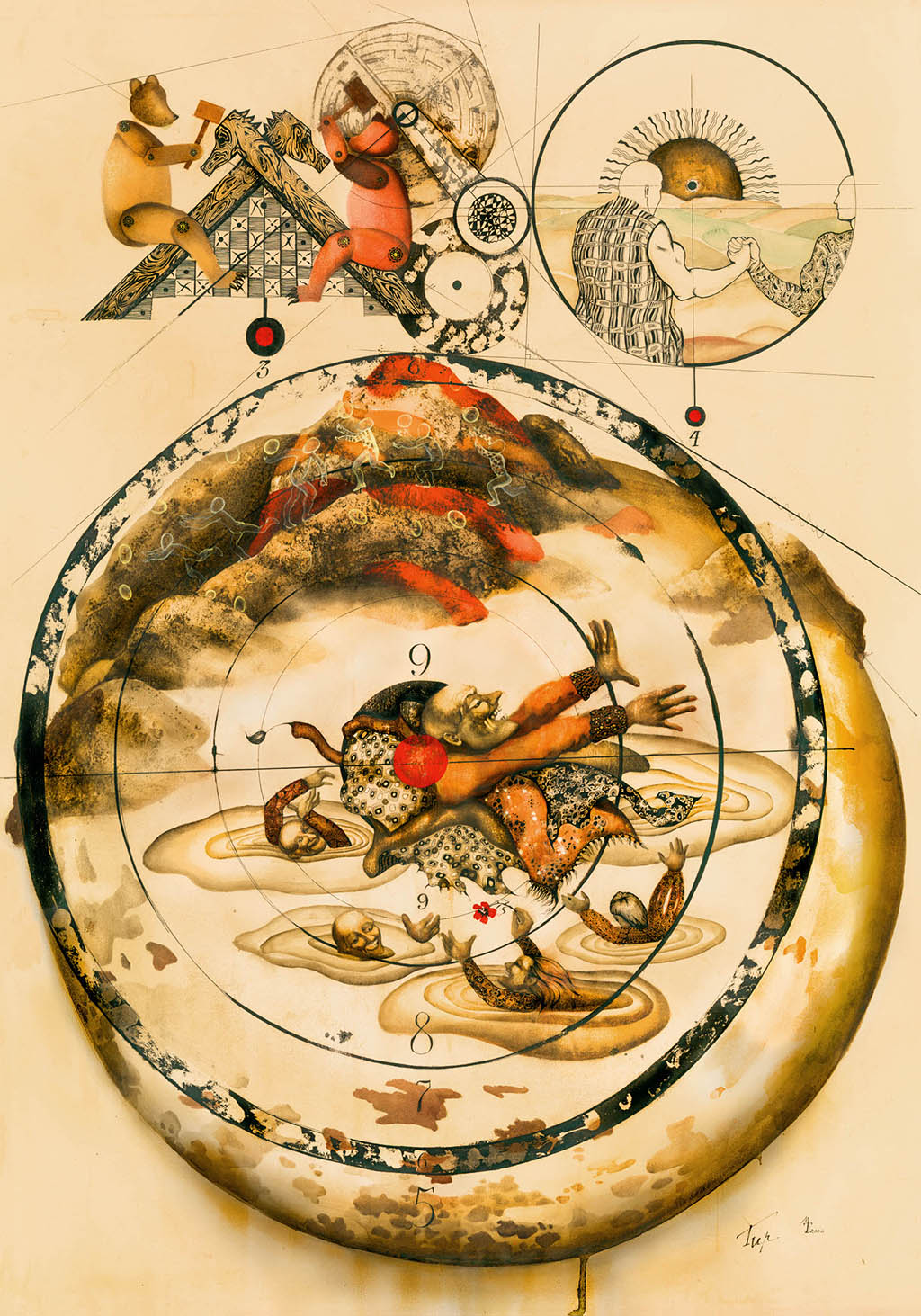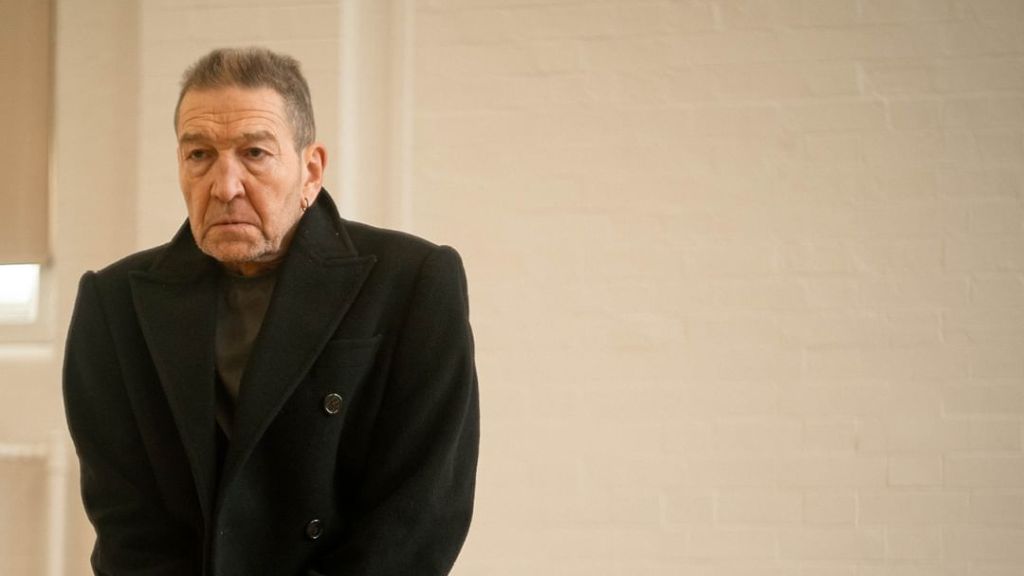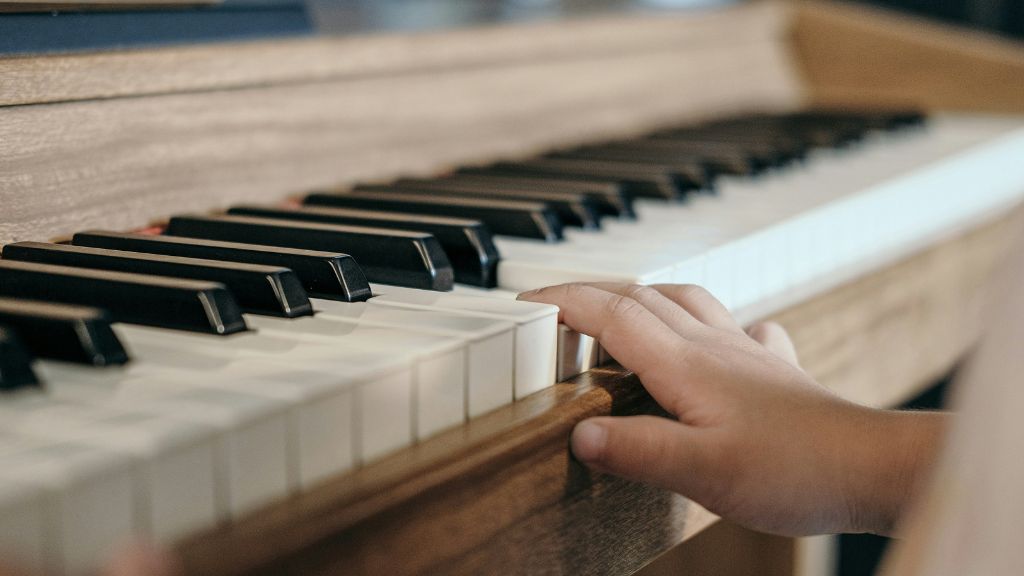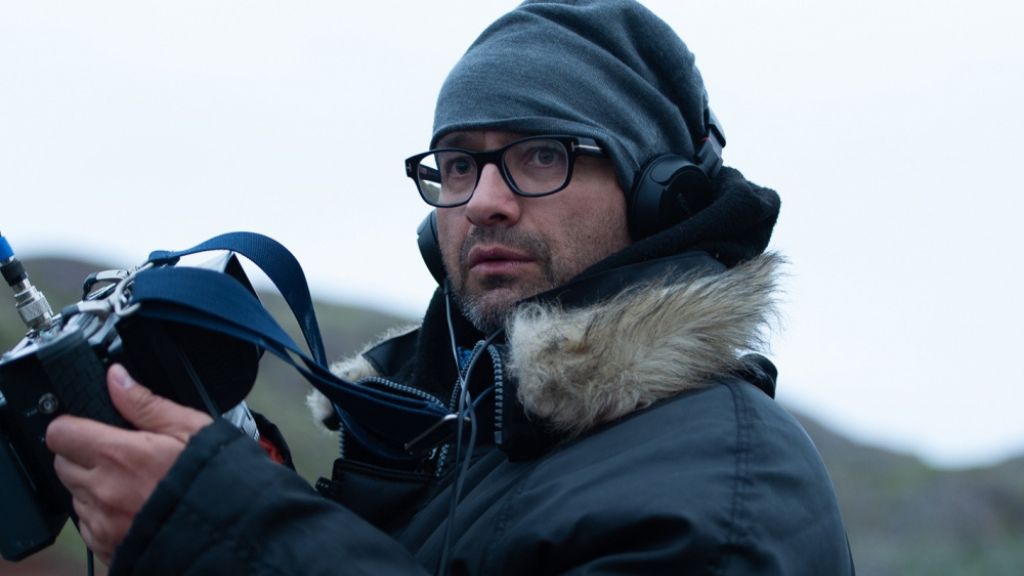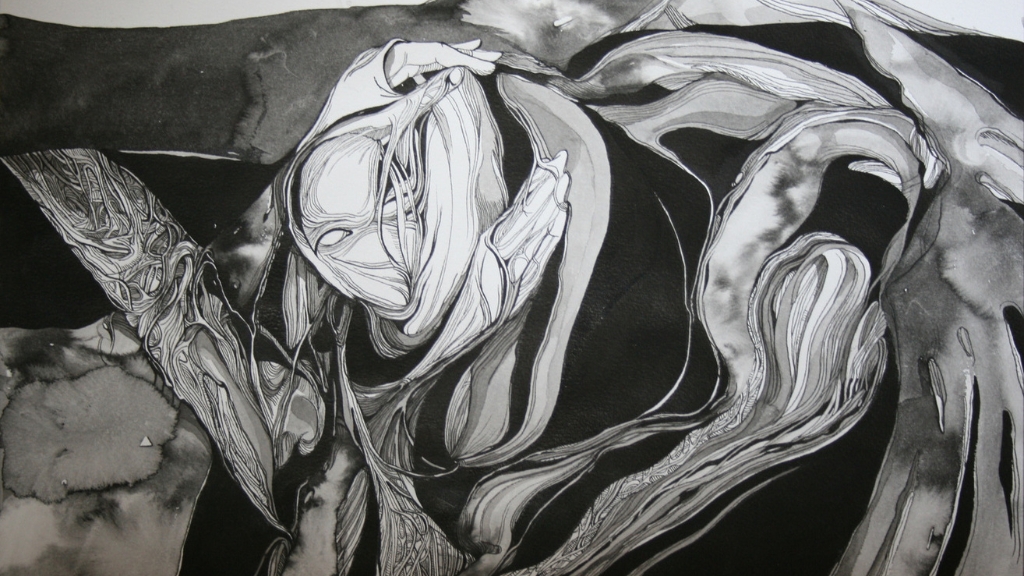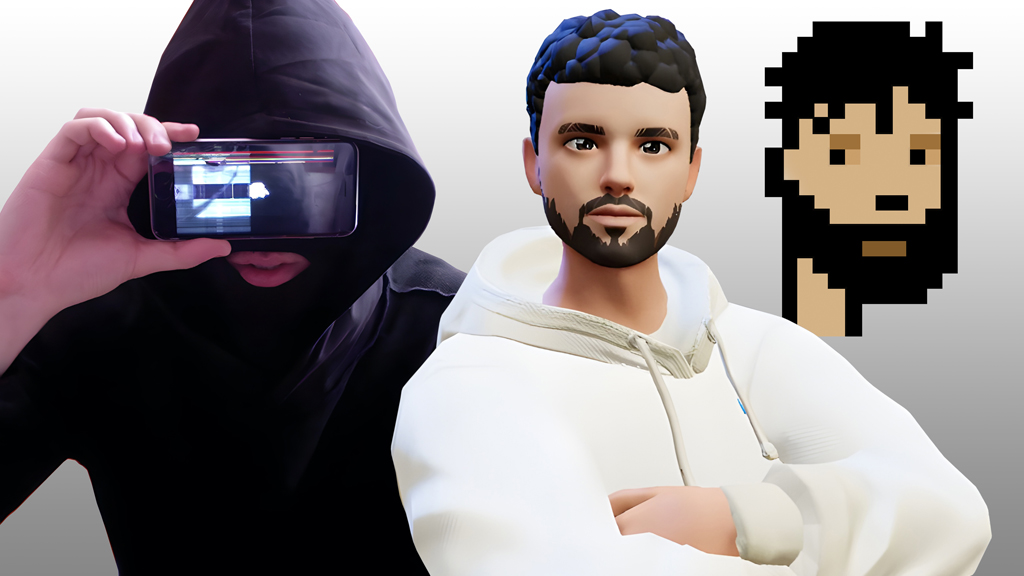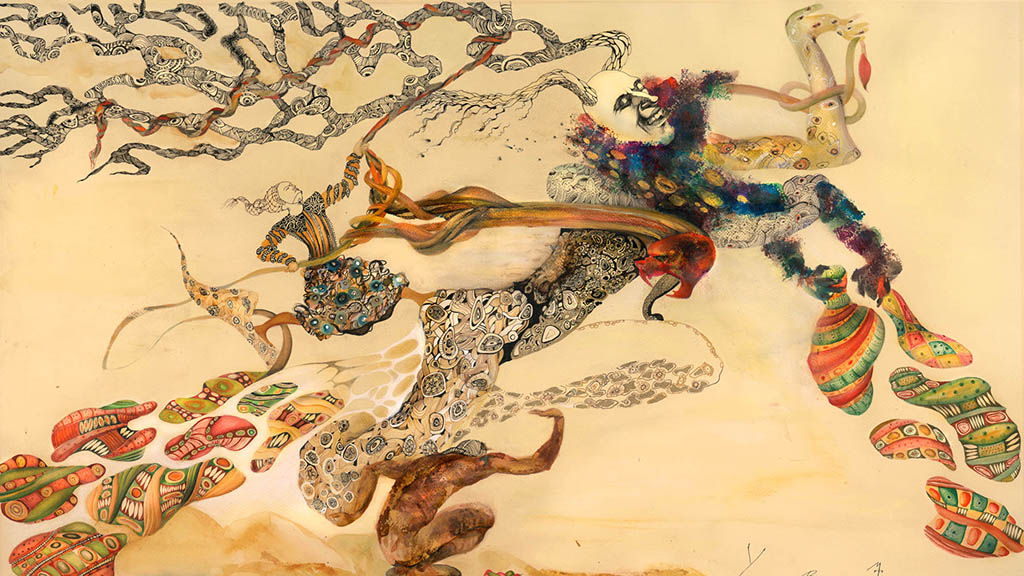
Margarita Godgelf and her “Collective Unconscious”
Afisha.London magazine continues its column in which it talks about interesting people of art who deserve attention. The hero of this article is Margarita Godgelf, a talented artist whose paintings are included in Kolodzei Art Foundation (USA), Alexander Glezer Russian Art Museum (USA) and private collections.
In 1991, Margarita Godgelf graduated from the graphic faculty of the prestigious Moscow Academic Art College in memory of 1905, and already in 1999 she became a member of National Artist’s Union of Russia, Guild of Painting, started exhibiting in the same year.
In 2001, Margarita attended classes in the renowned Institute of Contemporary Art in London, and a few years later she finished an intensive course of illustration at British Higher School of Art and Design. Throughout her career, the artist has implemented numerous projects in design and book illustrations.
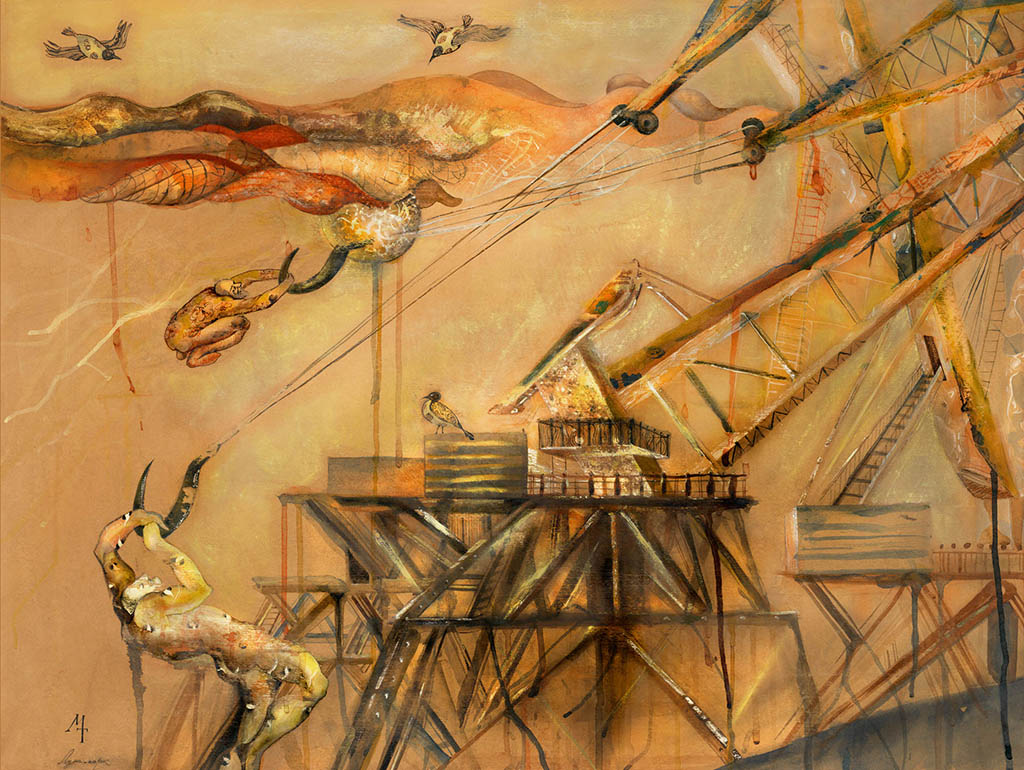
Margarita Godgelf, Alpha Males
Since 2013, Godgelf has been working with fresco paintings for Orthodox churches abroad, and therefore in 2016 she devoted herself to studying the raw fresco technology at painting of the St. Ioann Vladimir cathedral in Montenegro.
One of the most striking series of Margarita’s works is the Collective Unconscious. Margarita’s plastic drama appears as a deeply internal theater wherein the symbols of the past and present reflect the mystery of the artist’s very personal myth and where at the same time her personality, immersed as it is in visionary evidence, is deeply rooted in the collective subconscious while the crown is reaching beyond the empirically perceivable reality.
“The artist’s characters move through entire cultural history as glimmering memories of the past. Their images return to modern painting the mysterious luminescence of Rembrandt’s work and the interiors of Vermeer, and the energy of their space overturns into our world like the tense multi-layered quality of Francis Bacon’s work” notes Vitaly Patsukov, art critic, curator, theorist, corresponding member of the Russian Academy of Arts.
Margarita came to the art world from illustration and the book tradition creates a special tension in artist’s plastic world, transforming its imagery into a wonderfully organic of an enigmatic fusion of cultural memory and intuition. It is precisely in this unity of meaning and imagery that the archetypes of the text and sign meet, bringing together Borges and Pavic, and French post-Structuralists. It is here that one can re-live the ancient myth about the world as a Book, in whose labyrinths we all dwell.
The ideas and imagery, existing in the space of the Book, circulate as units of one and the same eternal structure, constantly generating and constructing the basic mythologemes of our reality. It opens like a symbolic parachute, returns lost time in the image of a floating Ark in the work Memory, its forms become living plasma, spiritualized elements in the work Gone with the Wind.
- Margarita Godgelf, Parachutists or The Fear of Flight
- Margarita Godgelf, Target (fragment)
Carrying elements of traditional Luna-park entertainments and the symbolism of mass culture a series of shooting range targets creates images reminding us of the flimsy borderlines between play and terror, of the possibilities of the catastrophes lurking within ordinary reality.
Those signs-symbols acquire a strange new life, quite unrelated to the artist’s intentions, they prolong their existence even beyond the life of the artifact, creating a reverberation of meanings and resonances.
Follow us on Twitter for news about Russian life and culture
Margarita mythologizes life itself, infusing its rational manifestations with profound reflections evolving into postmodern metaphysics. This is the position of the seeker of the signs of time, where the sacred shines through the concreteness of today’s realities, revealing the eternal themes of the relationship of spirit and matter, freedom and unfreedom.
Such is the Faceless project, based on dualism and exploring the historical distribution of gender roles in Eastern patriarchal society. At its center is the dramatization of opposites, going far beyond the opposition of male and female. The paintings from the series feature mysterious personages reminiscent of the fairytale characters of The Thousand and One Night. Their only clothes are shawls which provide them with refuge, a deeply personal human space, which the means of communication and clichés seek to violate.
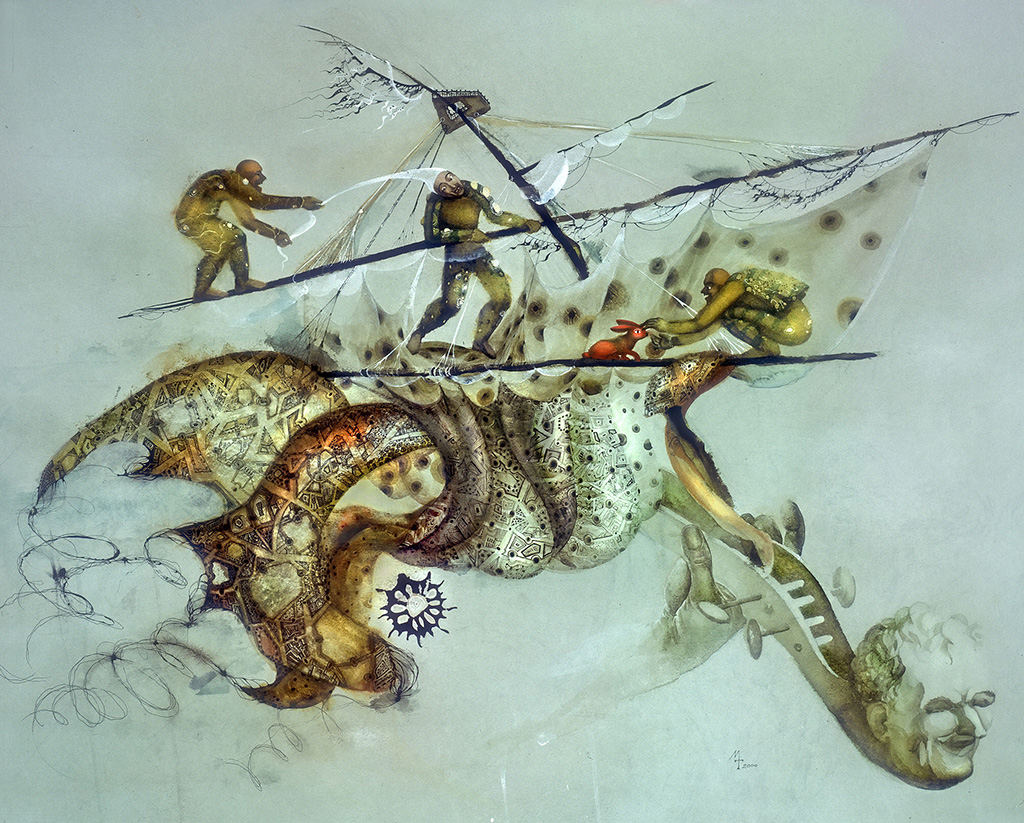
Margarita Godgelf, Memory
Part of the project is based on photographs of men covered with fabrics from which women’s haute couture clothing is sewn. The artist carefully works on the surface to eliminate its apparent flatness by introducing clearly emphasized three-dimensionality and enfilade quality. Multi-dimensional paintings destroy the photographic immediacy, its momentary nature, making her states timeless.
A divine chance, a rhythmically breathing space “compressed to the point of a dot”, to quote the poet Osip Mandelstam, the corporeal liberated of its materiality and prolonged in the purity of the artistic gesture as such, the artist’s gesture itself behind the spaciousness of the painting texture, its matrix as it were, which gives birth to a wholesome and harmonious human image — these constitute the dramaturgy of the birth of the works of Margarita Godgelf.
Cover photo: Margarita Godgelf, Gone with the Wind (fragment)
Read more:
How Diaghilev’s “Saisons Russes” influenced the European art world of the 20th century
Mariya Tatarnikova: art director, photographer, fashion designer
Alexandra Telliodora: Russian singer who has achieved success in the UK
SUBSCRIBE
Receive our digest once a week with quality Russian events and articles
